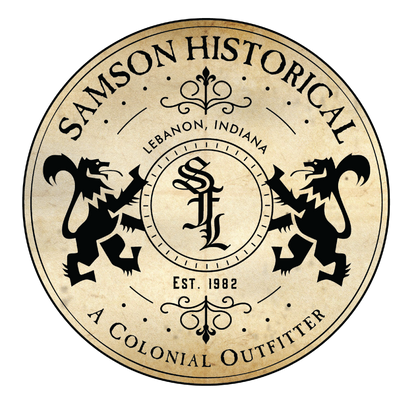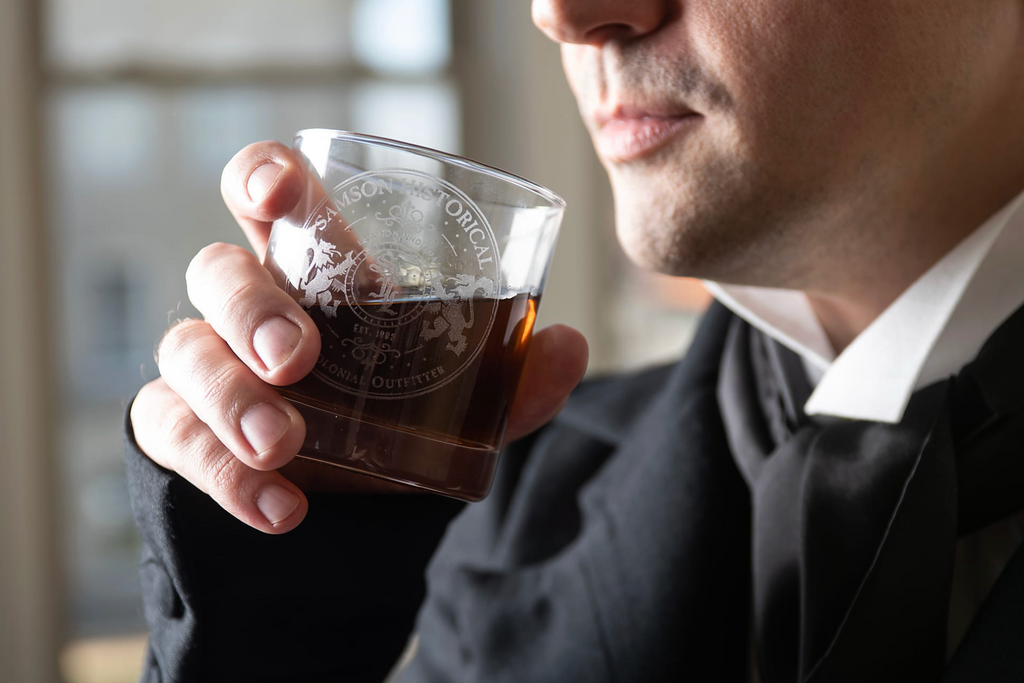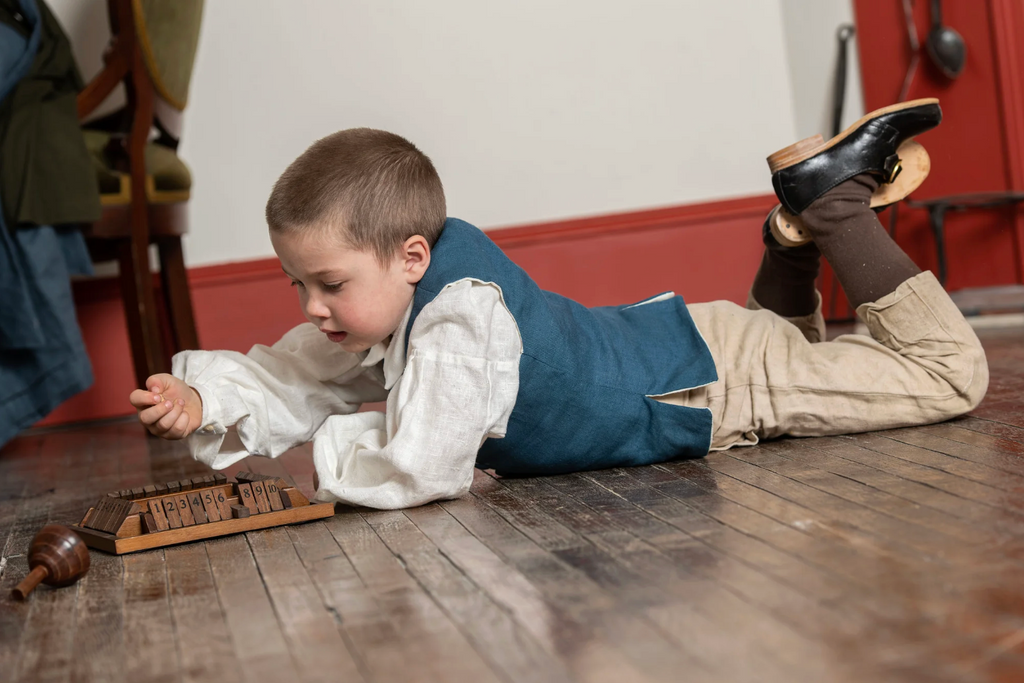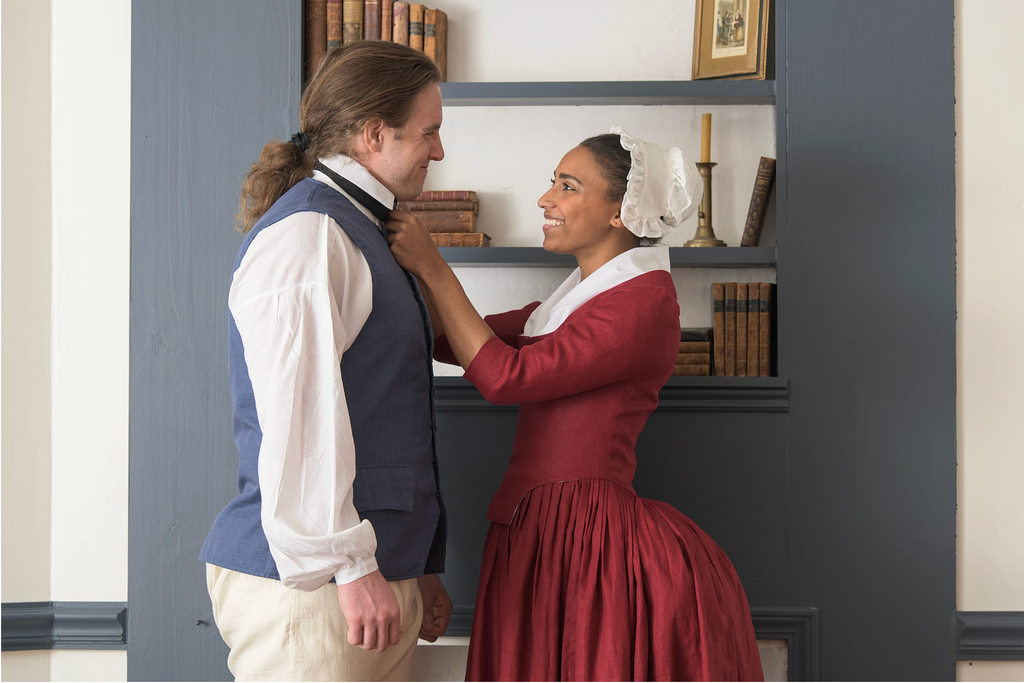You are viewing prices for canada 🇨🇦 !
Menu
-
- Men's Clothing
- Women's Clothing
- Children's Clothing
-
Camping
-
Cuisiner et manger
-
Articles pour la maison
-
At the Sign of the Red Lion
-
- Contactez-nous
- About the Samsons
- Historic Classification Definitions
- Programme de fidélité
- Blogues
- Liste de souhaits
- Bulletin
- Catalogue 2024
- Black Friday Cyber Monday
- (765) 481-2662
- Connexion
-
français

You are viewing prices for canada 🇨🇦 !
Men’s Clothing
Women’s Clothing
Children's Clothing
A Taste of the Past: Gingerbread, Linzers, and Colonial Confections
par Abbie Samson 4 lire la lecture

Sweet Traditions: Gingerbread in Early America
There is something unmistakably comforting about the scent of gingerbread. Warm spice, dark molasses, and the memory of winter gatherings all seem to rise at once from a single batch. For families today, gingerbread is a holiday staple—passed down through recipe cards, long conversations in the kitchen, and the simple joy of baking together. But for early Americans, gingerbread was more than a seasonal treat. It was nourishment, morale, and in one remarkable case, an act of service to a young nation.
Christopher Ludwick: A Patriot With a Baker’s Hands
Among the great figures of the Revolutionary era, Christopher Ludwick stands apart. Born in Germany, he arrived in Pennsylvania as a trained gingerbread baker and quickly became known for his skill, honesty, and unwavering loyalty to the emerging United States. When Congress appointed him Superintendent of Baker and Director of Baking for the Grand Army in 1777, Ludwick declined a military commission. Instead, he chose to serve where he believed he was needed most: feeding the soldiers.
He spent his own money when supplies ran thin, stretched rations farther than anyone thought possible, and baked gingerbread for the troops during some of the hardest winters of the war. More than once, officers noted how a simple sweet helped restore both strength and spirit. In a world of salt pork and hard bread, gingerbread tasted like home.
Our limited-edition gingerbread cookies are made using reproductions of Ludwick’s personal molds, and remarkably, they are produced on the very Philadelphia city block where his bakery once stood. It isn't easy to imagine a more direct line between past and present.
Each cookie—shaped in German maiden or striking tulip design—measures roughly 7" by 4" and comes boxed with a short history of both the mold and the baker who inspired it.
The Tradition of Spiced Cakes
Gingerbread was not new to the colonies. Recipes for spiced cakes appeared throughout Europe as early as the Middle Ages, evolving over centuries and crossing the Atlantic with settlers. What made American gingerbread distinct was the use of molasses, a readily available byproduct of the sugar trade. Its deep, earthy sweetness allowed even modest households to enjoy a rich holiday treat.
Eighteenth-century cookbooks often included multiple gingerbread recipes—soft varieties, crisp varieties, versions leavened with pearl ash, and festive molded designs. Hannah Glasse’s The Art of Cookery includes directions for “gingerbread nuts” and “soft gingerbread,” while Amelia Simmons’ American Cookery (1796) offers one of the earliest printed American versions flavored with molasses.
Gingerbread took many forms:
-
Cakes thickened with flour and warm spices
-
Biscuits stamped with elaborate wooden molds
-
Travel rations baked hard for longevity
For children, it was a treat. For soldiers, it was fuel. For bakers like Ludwick, it became a calling.
Holiday Baking in the Eighteenth Century
Winter baking was a communal event in the colonies. Ovens were heated while the day was still young, and families prepared doughs that could withstand the residual heat as it slowly faded. Gingerbread was often among the final items placed in the cooling oven—its spices mellowing, its edges crisping just enough.
The tradition of molded gingerbread was especially beloved. Carved wooden boards or ceramic molds were pressed into soft dough, leaving impressions of flowers, hearts, birds, or geometric designs. These were not merely decorative; they were considered blessings, symbols of good fortune, or marks of the household.
To recreate these practices at home, consider using:
- One of our period cookie molds
- A salt-glazed mixing bowl for combining delicious spices into dough
- A French-style wooden rolling pin to ensure a nice, even surface

Gingerbread for All Ages
For young historians, we continue to offer “Gingerbread for Liberty”, a beautifully illustrated book recounting Ludwick’s service to the Continental Army. Read alongside a plate of gingerbread, it is an easy and engaging way to introduce children to the human side of the Revolution.
For those seeking a deeper dive, our video “The Gingerbread Man Who Saved America” explores Ludwick’s life in greater detail—his military service across three conflicts, his entrepreneurial career, and his lasting impact on the morale of the Continental Army.

A Sweet Tradition Worth Keeping
In every century, gingerbread has served the same purpose: to bring people together. Whether enjoyed in a soldier’s camp, a colonial kitchen, or your home this holiday season, it remains a sweet reminder of generosity, perseverance, and the simple comforts that bind families and communities.
In addition to the Ludwick gingerbreads, we are also offering the Liberty Bell Linzer cookies made in the same Philadelphia bakery. The Linzer cookie traces its lineage to the Austrian Linzer tart—one of the oldest known tarts in Europe. Throughout the 18th century, variations of this spiced almond-and-jam confection spread across German-speaking regions and eventually made their way into the American colonies. Today, its familiar cut-out center and delicate layers make it a festive companion to any holiday table, linking Old World traditions with New World celebrations.
This year, as you prepare for gatherings and celebrations, consider adding a piece of this history to your table. Sweetness, after all, has always had a story.
Subscribe
Sign up to get the latest on sales, new releases and more …






